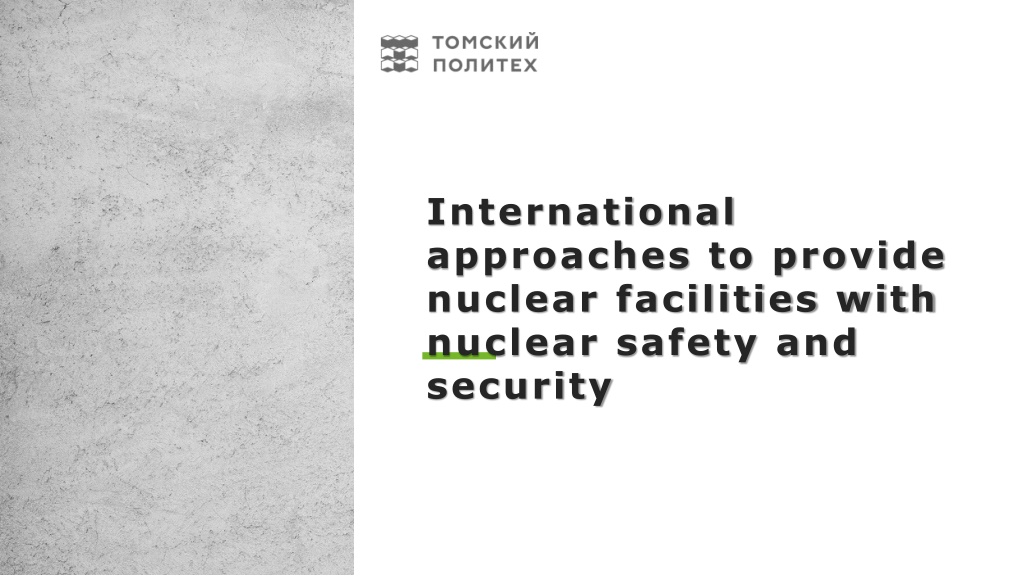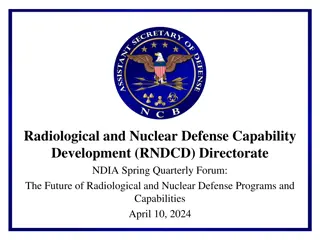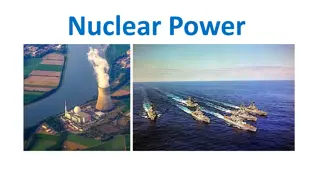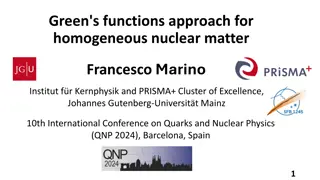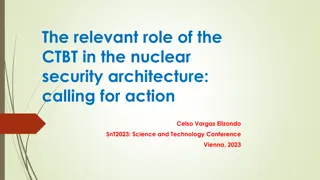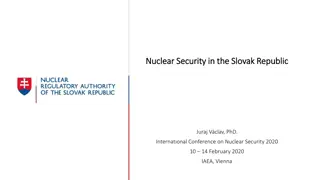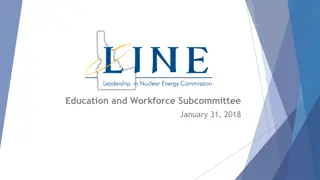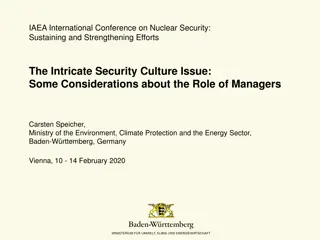International Approaches to Enhance Nuclear Safety and Security
Understanding the concepts of nuclear safety and security, their differences, and the importance of establishing a robust nuclear security culture are essential for safeguarding nuclear facilities. The International Atomic Energy Agency (IAEA) plays a significant role in promoting nuclear safety and security through conventions and guidelines, emphasizing the need for continuous development and maintenance of a strong nuclear security regime. By fostering a culture that supports and enhances nuclear security, organizations and institutions can effectively prevent, detect, and respond to malicious acts involving nuclear materials and facilities.
Download Presentation

Please find below an Image/Link to download the presentation.
The content on the website is provided AS IS for your information and personal use only. It may not be sold, licensed, or shared on other websites without obtaining consent from the author. Download presentation by click this link. If you encounter any issues during the download, it is possible that the publisher has removed the file from their server.
E N D
Presentation Transcript
International approaches to provide nuclear facilities with nuclear safety and security
Content - what nuclear safety is - what nuclear security is -the difference between nuclear safety and nuclear security - IAEA Convention on nuclear safety - Nuclear safety culture - https://www.youtube.com/c/nuclearsecuritynsspi/playlists 2
Nuclear security The IAEA defines nuclear security as "The prevention and detection of and response to, theft, sabotage, unauthorized access, illegal transfer or other malicious acts involving nuclear materials, other radioactive substances or their associated facilities Nuclear security culture - ? 3
Nuclear security nuclear security regime includes: Developing, fostering and maintaining a robust nuclear security culture . Nuclear security culture is defined as: The assembly of characteristics, attitudes and behaviours of individuals, organizations and institutions which serve as a means to support, enhance and sustain nuclear security The role of nuclear security culture can be deduced from the implied definition of nuclear security as the prevention of, detection of, and response to, criminal or intentional unauthorized acts involving or directed at nuclear material, other radioactive material, associated facilities, or associated activities 4
Nuclear security THE IAEA MODEL OF NUCLEAR SECURITY CULTURE 2.1. Essential Element 12 of the Nuclear Security Fundamentals [2] sustaining a nuclear security regime includes: Developing, fostering and maintaining a robust nuclear security culture . Nuclear security culture is defined as: The assembly of characteristics, attitudes and behaviours of individuals, organizations and institutions which serve as a means to support, enhance and sustain nuclear security [2]; the definition in Ref. [1] did not include and sustain . The role of nuclear security culture can be deduced from the implied definition of nuclear security as the prevention of, detection of, and response to, criminal or intentional unauthorized acts involving or directed at nuclear material, other radioactive material, associated facilities, or associated activities [2]. This cross-cutting concept explicitly or implicitly is relevant to many different aspects of nuclear security, as shown in Table 1. Accordingly, nuclear security culture and its assessment methodology need to be universal, and to be applicable to all types of facilities and activities. Figure 1 represents the IAEA model of nuclear security culture, as set out in the relevant implementing guide [1]. 5
Nuclear safety Nuclear safety is defined by the International Atomic Energy Agency (IAEA) as "The achievement of proper operating conditions, prevention of accidents or mitigation of accident consequences, resulting in protection of workers, the public and the environment from undue radiation hazards". - Nuclear safety therefore covers at minimum: - Extraction, transportation, storage, processing, and disposal of fissionable materials - Safety of nuclear power generators - Control and safe management of nuclear weapons, nuclear material capable of use as a weapon, and other radioactive materials - Safe handling, accountability and use in industrial, medical and research contexts - Disposal of nuclear waste - Limitations on exposure to radiation 6
IAEA Convention on nuclear safety The IAEA Convention on Nuclear Safety was adopted in Vienna on 17 June 1994 and entered into force on 24 October 1996. The objectives of the convention are to achieve and maintain a high level of nuclear safety worldwide, to establish and maintain effective defences in nuclear installations against potential radiological hazards, and to prevent accidents having radiological consequences. The convention was drawn up in the aftermath of the Three Mile Island and Chernobyl accidents at a series of expert level meetings from 1992 to 1994, and was the result of considerable work by States, including their national regulatory and nuclear safety authorities, and the International Atomic Energy Agency, which serves as the Secretariat for the convention. 7
IAEA Convention on nuclear safety The obligations of the Contracting Parties are based to a large extent on the application of the safety principles for nuclear installations contained in the IAEA document Safety Fundamentals The Safety of Nuclear Installations (IAEA Safety Series No. 110 published 1993). These obligations cover the legislative and regulatory framework, the regulatory body, and technical safety obligations related to, for instance, siting, design, construction, operation, the availability of adequate financial and human resources, the assessment and verification of safety, quality assurance and emergency preparedness. 8
IAEA Convention on nuclear safety The convention was amended in 2014 by the Vienna Declaration on Nuclear Safety.[10]This resulted in the following principles: 1. New nuclear power plants are to be designed, sited, and constructed, consistent with the objective of preventing accidents in the commissioning and operation and, should an accident occur, mitigating possible releases of radionuclides causing long-term off site contamination and avoiding early radioactive releases or radioactive releases large enough to require long-term protective measures and actions. 2. Comprehensive and systematic safety assessments are to be carried out periodically and regularly for existing installations throughout their lifetime in order to identify safety improvements that are oriented to meet the above objective. Reasonably practicable or achievable safety improvements are to be implemented in a timely manner. 3. National requirements and regulations for addressing this objective throughout the lifetime of nuclear power plants are to take into account the relevant IAEA Safety Standards and, as appropriate, other good practices as identified inter alia in the Review Meetings of the CNS. 9
! email: verhoturova@tpu.ru 10
